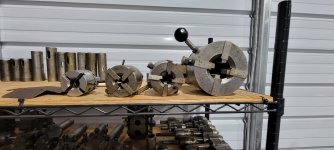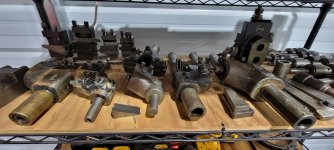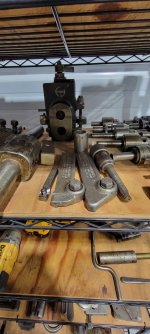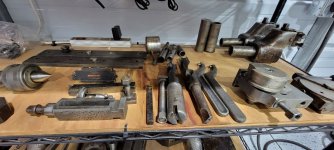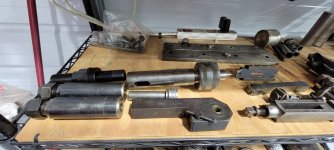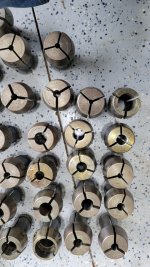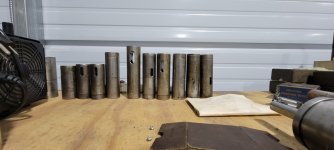jpointer311
Plastic
- Joined
- Sep 17, 2014
Good morning everyone. I have been in the market for a southbend tool room lathe but ended up picking up this old warner swasey #2.
I thought I was going to be able to find a compound cross slide but that doesn't appear to its going to happen.
Now comes the struggle... Do I get a VFD since I don't have 3ph and keep this around, do I sell it, or do I send it off to the scrap yard ??
It came with a bunch off tooling, some I believe is hardinge, which i have no use for and a big set of collets.
Not pictured is roughly 70+ 9/16d thread Chasers for the geometric die head.
What's the consensus, keep it, sell it, scrap it, trade it?
I thought I was going to be able to find a compound cross slide but that doesn't appear to its going to happen.
Now comes the struggle... Do I get a VFD since I don't have 3ph and keep this around, do I sell it, or do I send it off to the scrap yard ??
It came with a bunch off tooling, some I believe is hardinge, which i have no use for and a big set of collets.
Not pictured is roughly 70+ 9/16d thread Chasers for the geometric die head.
What's the consensus, keep it, sell it, scrap it, trade it?
Last edited:



